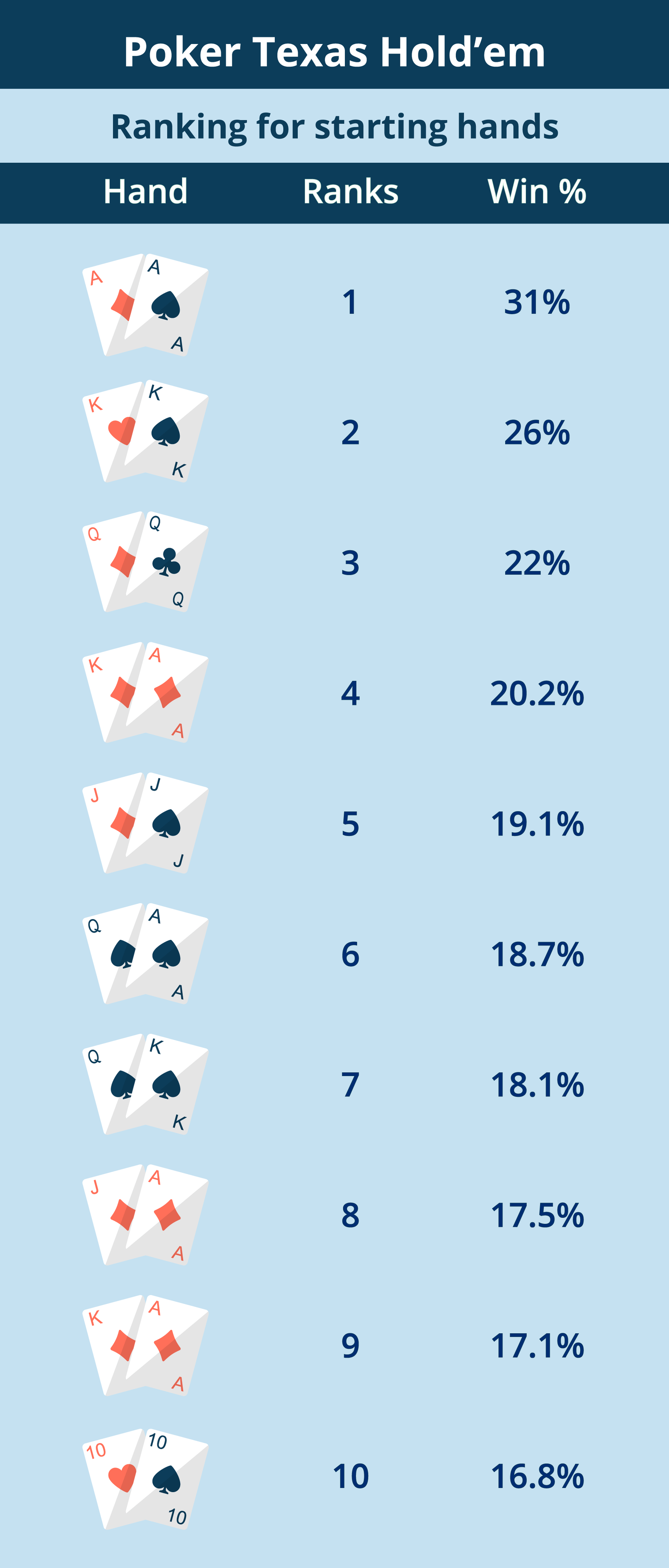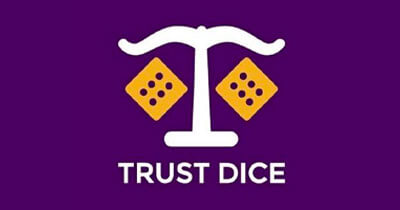Where to play the best Texas Hold’em Poker online in NZ?
Many sites will offer games of different levels and stakes, so you will have to make sure that you have a good idea of what type of Texas Hold’em poker you want before you get started. Some of the best sites to play Texas Hold’em poker are:

Master the rules & odds of Texas Hold’em
Texas Hold’em is one of the most popular poker games globally. It’s a classic game that’s easy to learn, and once you’ve mastered it, you can play at just about any table in the world. If you’re looking to get started in Texas Hold’em, here are some of the basic rules and odds.

The objective
Texas Hold ’em is a poker variant that can be played with 2 to 10 people. Its name comes from the fact that each player receives two cards face down, which only they can see. Five community cards are laid on the table, and players use these seven cards to make the best hand of five cards.
Types of bets in Texas Hold’em
Texas Hold’em has several betting rounds, and there are four different types of bets you can place:
Ante Bet
This is a bet that all players are required to make before the cards are dealt.
Blinds Bet
Two players make blinds bets before any cards are dealt. The small blind and the big blind are placed by players sitting to the left of the dealer button, which determines where the dealing will begin.
Check
A check is a decision not to place another bet during a round. This can only be done if no other player has made a bet during that round, and it will force you to fold if someone else makes a bet before your next turn.
Call
A call is when you match another player’s bet from that round. You have to match their total amount to stay in the game for that round.
RTP, payouts and house edge in Texas Hold’em
There are two types of Texas Hold’em poker games: cash games and tournaments. The difference between the two is that in a tournament, the player pays a fixed entry fee, which goes into the prize pool, and they have a chance to win a share of it.
In a cash game, players pay blinds based on the stakes they choose to play. There are no prizes in cash games, only money won or lost between players.
RTP in Texas Hold’em
RTP stands for “Return to Player,” and is usually expressed as a percentage. It represents how much of each dollar wagered on a game will be paid back to players over time. In Texas Hold’em poker, the RTPs are almost always between 97% and 99%.
Payouts in Texas Hold’em
The payouts in Texas Hold’em are as follows:
- Royal Flush – Straight flush of highest value card (e.g. 10, Jack, Queen, King, Ace)
- Straight Flush – Straight flush of any other combination
- Four of a Kind – All four cards of one value and one other card (e.g. 8, 8, 8, 8, 6)
- Full House – Three of a kind and two of a kind (e.g. 5, 5, 5 and 2, 2)
- Flush – Any five cards all the same suit (e.g. 3 of clubs, 3 of diamonds, 3 of spades, 3 of hearts, 7 of clubs)

- Straight – A sequence of five cards in any suit (e.g. 4 of hearts, 5 of hearts, 6 of diamonds, 7 of spades, 8 of clubs)
- Three of a Kind – Three cards of the same value and two other unmatched cards (e.g. 5, 5, 5 and 2, 4)
- Two Pair – Two sets of two cards with the same value (e.g. 3, 3 and 9, 9)
- One Pair – Two cards with the same value and three unmatched cards (e.g. 4, 4 and A diamond J, and 3).
There is a lot of variance in Texas Hold’em, so it’s essential to know how payouts work when you go into a game:
- Royal Flush: 100% payout
- Straight Flush: 75% payout
- Four of a Kind: 50% payout
- Full House: 25% payout
- Flush: 15% payout
- Straight: 10% payout
- Three of a kind: 5% payout
House edge in Texas Hold’em
In a game of Texas Hold’em, the house edge can be calculated using a simple formula. To calculate the house edge, you’ll need to know the win odds for both hands.
To get the win odds for each hand, subtract the number of outs from 47 and then divide that by the number of outs to get the win odds. For example, if you have four outs, your winning odds are 43 / 4 = 10.75%.
To get the house edge, multiply each hand’s win odds by its payout minus one and add them together. This will give you a positive or negative number that indicates a positive or negative house edge for each hand.
Texas Hold’em vs other Poker variants
Texas Hold’em is the most popular poker variant, and it’s easy to see why. The game is played with only two cards per player and five community cards; it’s fast-paced and easy to learn. Most poker players start with Texas Hold’em, but that doesn’t mean there aren’t alternatives for those who prefer something a little different.
| Texas Hold’em | Omaha | 7 Card Stud | |
|---|---|---|---|
| Rounds | 5 | 5 | 5 |
| Hole Cards | 2 face down | 4 face down | 3 face down |
| Winning Hand | 5 cards | 6 cards | 5 cards |
Difference between Texas Hold’em and Omaha Poker
The significant difference between Texas Hold’em and Omaha is how many hole cards each player receives. In Texas Hold’em, each player is dealt two cards face down. In Omaha poker, each player is dealt four cards face down. These four hole cards in Omaha must be used along with precisely two of the five community cards to make a hand.
This means that a player who flops a straight in Texas Hold’em has six possible outs to make a seven-card straight. In Omaha, that same player would have only four outs.
Difference between Texas Hold’em and 7-Card Stud Poker
Texas Hold’em starts by removing the two cards from the deck that are not used in the game. Those cards are then replaced with two wild cards called jokers. The dealer then deals each player two cards face down and five community cards. All players can use those community cards to make their hands.
In 7-Card Stud poker, each player is dealt seven cards – four face up and three face down. The best five-card hand wins the pot after everyone’s cards have been revealed at showdown.
Strategies for advanced players
Texas Hold’em is fast-paced, competitive, and takes skill to win. Of course, the more you play, the better you get – but that doesn’t mean you stop learning. Whether you’re a seasoned pro or just looking to improve your game, there are always strategies you can use to up your odds of winning. Here are a few:
Ask for cards strategically
If you have a clear and consistent way of signalling what card (or cards) you want, then your opponents will have less information about your hand. This means they can’t take advantage of any tells you might have.
Play aggressively
When you’re playing against aggressive players, it can be tempting to back down and play defensively. However, that only gives them more control over the game. So if they bet aggressively, raise them higher than they expected! This puts pressure on them to fold or match your bet—and if they match it, they’ve lost some chips to you already.
How to play Texas Hold’em – Breakdown of a round
If you’re looking for a comprehensive guide to Texas Hold’em, here are the basics of how to play each round and keep track of who wins.
The basics
Before we get into the nitty-gritty, you need to know a couple of things about how Texas Hold’em works:
- Each player starts with two cards face down;
- There will be five community cards (face down initially) on the table;
- It costs money to place bets on the community cards.
The Blinds
The game begins with each player being dealt two cards face down. These cards are known as your hole cards, and only you can see what they are.
The game begins with two players left of the dealer posting blinds (forced bets). The player immediately left of the dealer posts a small blind, and the player two to the left posts a big blind, which is usually double the amount of the small blind.
Preflop
After everyone has posted their blinds (or folded), there is an initial round of betting known as ‘preflop‘. During preflop, three types of bets can be made: call, raise or fold.
- A call is when a player matches a bet on the table;
- A raise is when a player increases the amount of the bet on the table;
- A fold is when a player does not match a bet or raise and no longer participates in the game until the next round starts.
Flop
The flop is the second round of betting. After the first round of betting, the dealer gives each player two cards face down. The dealer then places three community cards face-up on the table for all players to see. These are known as the flop.
Turn
Players can now make their best five-card poker hand using any combination of their hole cards and the community cards. The second round of betting ensues, followed by a fourth community card (the fourth street or the turn) and the third round of betting.
River
Then comes a final community card (known as the fifth street or the river) and the fourth betting round.
Showdown
During showdown, the players remaining in the pot have to show their hands to determine who has won. The winner with the best five-card hand gets half the pot, and another quarter goes to whoever made the highest flush, while the remaining quarter goes to whoever made the lowest hand.
Easy beginner mistakes to avoid
The goal of poker is to have the best hand at the table. However, before you get there, you need to avoid several common beginner mistakes. You can avoid them by learning and following these tips:
- Don’t play too many hands.
- Don’t bluff too often.
- Don’t limit your bluffing range when playing against good players.
- Don’t call off your stack with low pairs.
- Don’t call raises from a position with speculative hands.
- Don’t call large bets on the river with weak holdings in multi-way pots.





